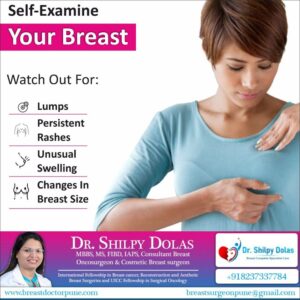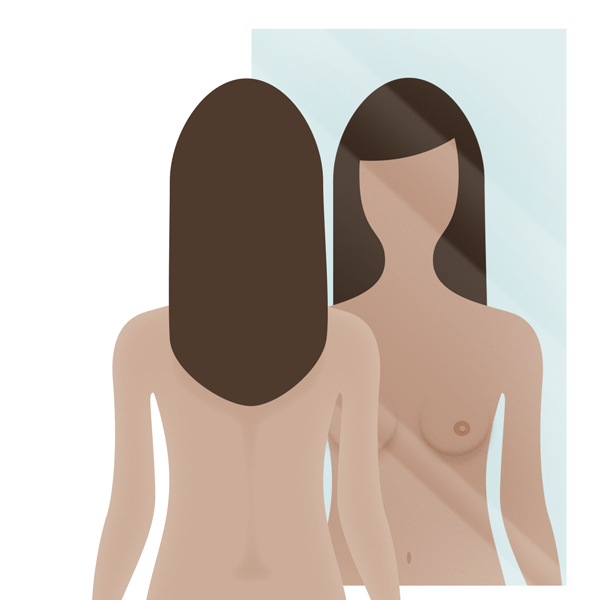How to Perform a Self Breast Examination
Do you want to perform a self breast examination? If so, read this article for tips and techniques. This article will also teach you to check for early signs and symptoms of breast cancer like dimpling, retraction, and symmetry. This article will give you the confidence to conduct your breast self examination and get the information you need.
Why do self breast examinations or breast self examination?
Data suggests that 40% of breast lumps are detected during a self breast examination. So if a woman notices a lump early, a possible treatment is also less for her. To avoid significant chemotherapy and locally advanced breast cancer, women should examine their breasts. Raise your arms and head towards your breasts, and check both your breast’s position and equality in a mirror.
When to do a self breast examination?
Doing a self breast examination is a straightforward procedure. A woman should keep the following points in their mind.
- Ideally, it should be started after the age of 20.
- it should be done every month.
- It should be performed after 5-7 days of the first day of the last menstrual period.
What are the two essential parts of self breast examination?
Two crucial parts of self breast examination are-
- how your breasts look,
- how they feel
Three important positions to do self breast examination are-
- Standing in front of the mirror with arms raised and by the side to look booth the breasts
- Under the shower
- Semirecumbant position
How to perform a breast self-exam

A breast self-exam can be performed by anyone, whether you are a professional or want to do it at home. Make sure that you have a mirror nearby, and then follow the steps below to ensure that you’re doing it correctly. Look for any differences in size, dimpling, bulging, or nipple inversion. You can also use your fingertips to check the area around each nipple to ensure a healthy breast.
Do a breast self-exam once a month, but pick a specific day of the month that suits you. Try to perform the exam while you’re standing upright or leaning forward. You’ll want to be aware of any changes in your breasts, including dimples or scaling. You may also want to tighten your chest muscles and hold the breasts correctly.
It’s important to repeat a breast self-exam every month to keep track of changes and ensure that you don’t miss any lumps or irregularities. If you’re a woman who’s been through a period, it’s important to remember that 80% of lumps or bumps are benign. You should always see a breast specialist if you find something in your breasts that doesn’t feel right.
When to perform a breast self-exam?
It would be best to practice the technique when you’re about 20 years old. It would help if you practiced it every month until you got used to it. It’s helpful to get in the habit of it so you won’t forget to do it on the suitable days. You can always ask for a demonstration and ask for advice when in doubt.
Checking for symmetry
To perform a self-breast examination:
- Face forward while holding your arms out.
- Press your palms together and gently lift your arms.
- Examine your breasts, making sure they are symmetrical and have smooth ridges on both sides.
- Feel for swelling in the armpit area and look for bumps on the breasts.
You can also perform the breast exam while in the shower or getting ready. Use your fingers’ flat parts to touch the breast tissue near the surface.
To perform a self-breast examination, lie flat on a pillow to make your breast tissue-thin. With the palm of your left hand, gently feel your breast area using your fingertips. You can also use the pads of your middle fingers or the backs of your fingers to feel the breast tissue. Repeat this process on both sides of your body to check for symmetry. If the breasts feel different, it could be because the tissue is too thick or too thin.
Note down your breasts’ size, shape, symmetry, and asymmetry if you find a lump. If any of these things seem unusual, consult your breast surgeon. Even if you find a lump, do not worry – 8 out of 10 lumps in the breast are not cancerous. Self-breast exams are a great way to get familiar with your body and detect early symptoms of breast cancer. For step-by-step directions, download our breast self-examination PDF.
Checking for dimpling
Dimpling can be an essential symptom of breast cancer. A dimpling breast may not necessarily indicate a particular type of cancer. Sometimes dimpling breast skin is caused by skin issues that may not be cancerous. In this case, you should contact your health care provider to have the problem checked out. Many breast cancer symptoms may be masked by dimpling skin.
To perform a self-breast examination, start by showering. With soapy hands, look at your breasts and compare them side-by-side. Dimpling skin is an indication that a mass or tumor may be present. Flex your chest muscles to check for lumps or bumps to ensure you are not missing anything. Checking for dimpling skin can be helpful to identify a tumor that affects the nipple or a ligament.
When doing a self-breast exam, it’s essential to look for changes in the skin, especially around the breasts. It’s also important to look at the thickness and colour of your skin, as changes there could be a sign of breast cancer. Inflammatory breast cancer may also cause skin dimpling and should be checked by a health care provider.
It is crucial to lay down on a flat surface and support your head with a pillow during your breast self-examination. The arm should rest behind your head, and your hand should be positioned. Use the first three fingers of your opposite hand to press the breast and surrounding area. Use all three fingers of your hand to avoid mistakenly identifying the breast tissue as a lump. It’s also essential to apply increasing pressure to each breast to ensure that the tissue under your skin is not superficial.
Checking for retraction
Exam your breasts and feel for any retraction or dimpling in a mirror. The breasts should be symmetrical. If you notice any of the following signs, you should visit your health care provider. In addition, retraction or dimpling in the breast can indicate a possible underlying mass. If you notice any pain or redness, you should seek immediate medical attention.
Checking for lumps
The goal of breast self examination is to identify any changes in the breasts. You can use the technique of visualizing a clock face over one breast while moving your fingers vertically. To ensure a successful self breast examination, usually breathe while doing it. If you find a lump, make a note of it to refer to it later. Most breast lumps are harmless and will disappear after the menstrual cycle.
To perform a breast self examination, remove your clothing above your waist. It is best to lie flat to feel the breast tissue more easily. Place a pillow under your back arch to ensure you’re not protruding when you’re lying flat. Next, use your left hand and right hand to gently press against the breast tissue in small, circular motions. You want to cover the entire breast area and don’t miss anything.
While breast lumps can be scary, most are harmless. It’s important to note that they may signify something more serious. A mammogram can detect a lump early, and if you’re unsure about a lump, contact your doctor. A breast surgeon can help you diagnose the cause of a lump. If you notice a lump during a self breast examination, mention it to a doctor.
Breast self examination is very important for women of all ages. Whether it’s a lump or something else, it’s essential to get screened at a younger generation. At the same time, mammograms can detect cancer before it becomes noticeable, but one should not think that after doing a mammogram, everything is clear. You should meet a breast cancer specialist and clarify the details. A breast surgeon will do the examination and give you a proper diagnosis. Breast self examination helps women become familiar with their breasts, allowing them to recognize changes in their breast tissue and help prevent further complications. Data suggests that self breast examination detects 40% of breast lumps by which you can avoid other complications and significant drawbacks. It is always better to be breast aware.

